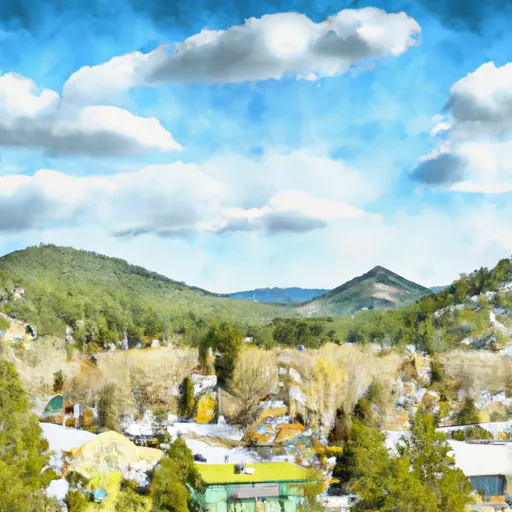°F
°F
mph
Windspeed
%
Humidity











Yellow Pine, Idaho is a small town nestled in the heart of the Payette National Forest. Known for its stunning natural beauty and abundant outdoor recreation opportunities, Yellow Pine offers a unique experience for nature enthusiasts.
The climate in Yellow Pine is characterized by cold winters and mild summers. Winter temperatures often dip below freezing, with heavy snowfall common, making it a haven for winter sports enthusiasts. Summers are pleasant, with temperatures averaging in the 70s°F, providing the perfect climate for outdoor activities.
Hydrologically, Yellow Pine is surrounded by numerous rivers and streams. The East Fork of the South Fork of the Salmon River flows nearby, providing excellent opportunities for fishing, kayaking, and rafting. The area is also home to several alpine lakes, which are ideal for swimming, boating, and picnicking.
Outdoor recreation opportunities are abundant in Yellow Pine. The surrounding forests offer endless trails for hiking, mountain biking, and horseback riding, allowing visitors to explore the stunning mountain vistas and diverse wildlife. In the winter, the area transforms into a winter wonderland, offering activities such as snowmobiling, cross-country skiing, and snowshoeing.
Overall, Yellow Pine, Idaho is a hidden gem for outdoor enthusiasts, boasting a stunning climate, pristine hydrology constituents, and a wealth of outdoor recreation opportunities year-round.
Weather Forecast
Yellow-Pine receives approximately 943mm of rain per year, with humidity levels near 68% and air temperatures averaging around 2°C. Yellow-Pine has a plant hardyness factor of 4, meaning plants and agriculture in this region thrive during a short period during spring and early summer. Most plants will die off during the colder winter months.
Regional Streamflow Levels
7
Cubic Feet Per Second
4
Cubic Feet Per Second
3
Cubic Feet Per Second
67
Cubic Feet Per Second
Nearby Camping
| Camping Area | Reservations | Toilets | Showers |
|---|---|---|---|
| Halfway House | |||
| Warm Lake | |||
| South Fork Salmon River | |||
| Four Mile | |||
| Buck Mountain | |||
| Poverty Flat |



